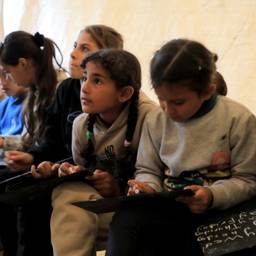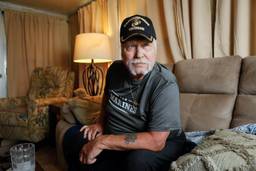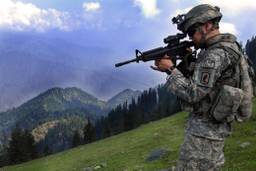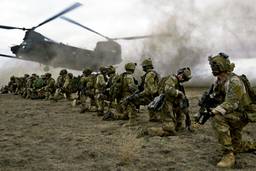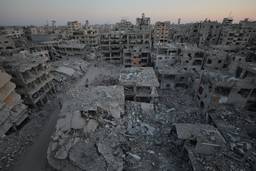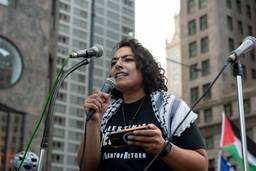Aaron Bushnell's Sacrifice Was a Deeply Loving Act
War resister Rory Fanning reflects on Aaron Bushnell’s legacy.
Rory Fanning
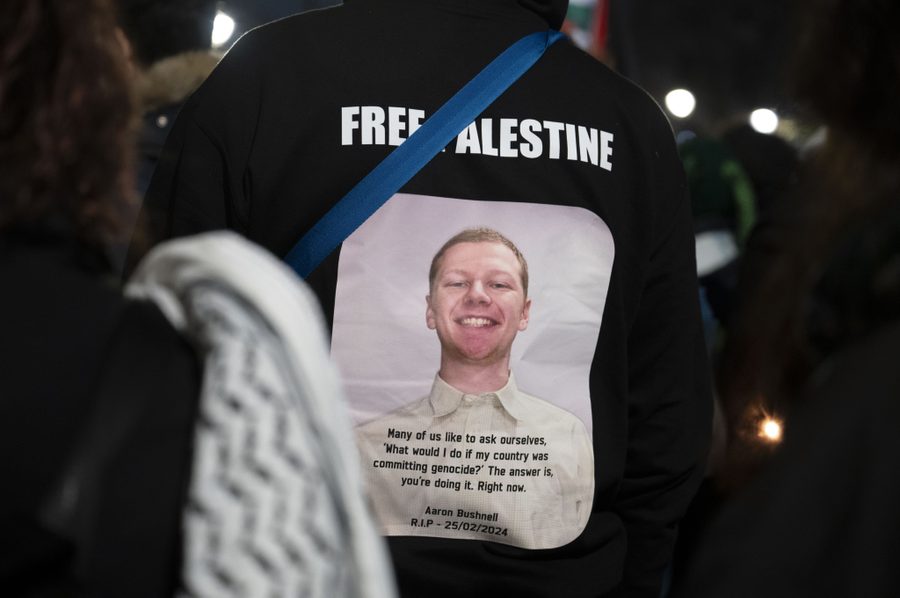
This article was originally published by Tempest Magazine.
It was 6:30 a.m. on Monday morning when I watched Aaron Bushnell pour accelerant over his head and light his military uniform and self on fire outside of the Israeli embassy in Washington D.C.
My kids were still sleeping. My wife was upstairs preparing to start another week of teaching first graders. Water for oatmeal and coffee heated on the stove. The sun cast an unseasonably warm light through the window over the sink in our kitchen.
I learned of Aaron’s name via text from my friend Spenser Rapone, who famously opened his dress blues at his West Point graduation to reveal a Che Guevara T-shirt. Spenser then renounced the military and the wars in Iraq and Afghanistan. His military career ended with the protest, his conscience fully intact. Spenser’s text that morning read:
Aaron Bushnell.
Now that’s personal courage.
Truly we are led by the most gutless cowards.
I Googled Aaron’s name. ”Active-Duty Air Force Member Self-immolates in Front of Israeli Embassy,” one headline declared at the time. I found the video.
As Aaron walked down the street, his cell phone broadcasting through Twitch, I knew I was about to watch something horrifying and gruesome. “You owe it to Aaron to watch,” I told myself, trusting my ability to block out what I was about to see before my kids walked down the stairs that morning.
Writing about my time in the military, my experience as a war resister for the last 15 years and the deadly consequences of U.S. imperialism, I’ve grown accustomed to compartmentalizing my feelings around my kids and wife. (Although I’m sure they could point to many examples that contradict that.) I thought I would be OK that morning.
I was struck by how calm Aaron was as he addressed the camera.
He talked about the genocide in Gaza and refusing to be complicit in it. He also spoke of the ruling class normalizing the kind of death he was about to show us.
It was a Sunday afternoon. The sun was bright overhead as he walked to his final destination. It seemed too sunny, too nice of a day, for what I was about to see. Aaron reached the Israeli embassy, placed his phone on the ground at an upward angle, walked up the driveway and stood in front of a black gate that looked like it was made of iron spears. Aaron then doused himself with a liquid stored in a large navy blue water bottle covered in bright stickers. The fuel looked like water. He bent over and had a hard time with the lighter. Yet his hands weren’t visibly shaking. I rooted for it not to light.
Then it happened. The fire grabbed hold of his pant leg. The flames were in control now. My blood started racing. Aaron yelled “Free Palestine” as fire rushed up his leg and back. His yell turned to a visceral scream. Aaron’s government issued boots pounded the pavement in a heavy stomp. For a second, the thought of the U.S. military burning Pat Tillman’s uniform after he was killed in an act of friendly fire in Afghanistan flashed in my head. Aaron wasn’t running or rolling on the ground trying to put out the flames. He was in complete control of his protest. I wondered what I would do at that moment. How would I handle the pain Aaron was experiencing? My body tensed.
Somehow, through the flames, Aaron was standing tall in spite of the agony. He accepted reality as the relentless flames engulfed him, aware that many of us would be watching.
The air was then sucked out of his lungs. It looked like his mouth was moving but there was only silence, as a cop — who would come to represent the antithesis of Aaron — moved into frame hunched over a weapon drawn on Aaron’s burning body. Aaron was still standing. I imagined every memory from his short and now hallowed life flashed before him.
The water boiled on the stove.
Repressing the anxiety and shock I was now feeling, I made the coffee, sprinkled blueberries and cinnamon over the oatmeal and started cleaning. More than usual. Everything was in order when the kids walked down the stairs. I felt an urgent love for them. I gave them both a kiss through their messy bed heads. I didn’t want to stop moving so I made eggs, carved up an apple and filled their orange juice glasses.
I asked them how they slept. “Good,” they both wearily answered as they ate their breakfast.
I was living. Not on fire. My kids were in front of me.
After breakfast, I sat down in the living room, opened my phone and tried to take a few calm, deep breaths. I sent a text to Spenser.
Jesus.
I just watched the video.
I couldn’t say more.
I opened Twitter and the first picture I saw was of a leveled city block in Gaza. I tried to guess how many bodies were under the rubble. It’s likely there were hundreds. Many undoubtedly experienced the same fiery death as Aaron, yet it was Aaron’s image that I couldn’t shake. Sometimes a photo that holds hundreds of dead bodies can be less haunting than an image that holds one. The mind is strange.
I scrolled and saw a story about an ambulance in Rafah that had been bombed the night prior. Then I scrolled to see the last pictures of yet another Palestinian family that had been wiped out by a U.S.-funded airstrike.
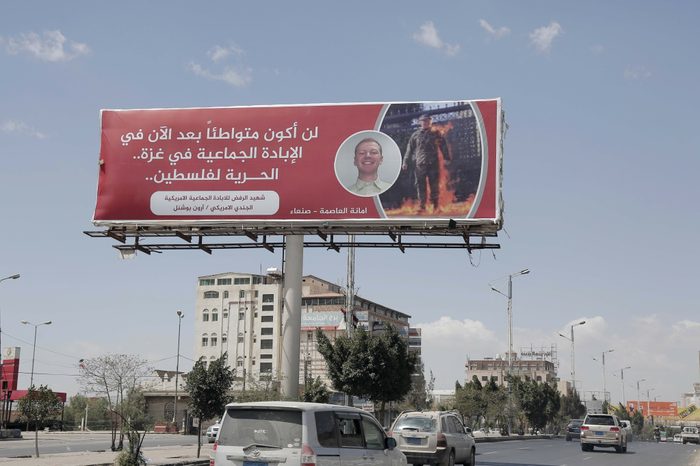
In the days since Aaron lit himself on fire, I haven’t slept much. I’ve thought a lot about the genocide that drove Aaron to such a protest. I’ve read about other massacres carried out against Palestinians, like Operation Protective Edge when Israel slaughtered 2,251 people in 2014. And Operation Cast Lead in late 2008 when more than 1,400 Palestinians were murdered by Israel, with the blessing of the United States. And the innumerable people who have been killed since and before the 1948 Nakba.
I also reread articles about Chelsea Manning’s revelations that showed how only a select few highly vetted reporters were allowed to cover the war in Iraq — a war where the United States killed hundreds of thousands of Iraqi civilians. Many were burned alive. The United States had learned much from the holocaust that was the Vietnam War, when images of death and destruction were broadcast into homes across America on a nightly basis. There would be no such images shared on mainstream news channels from Iraq and Afghanistan. Social media is changing things.
The military taught me that, for some, death carried out from a great distance is not as haunting and disturbing as death executed in close quarters. Paul Tibbets, the Air Force pilot who dropped the atomic bomb on Hiroshima proudly stated that he “never lost a night’s sleep on the deal.” If that same guy personally watched children burn — like Aaron burned — after his bomb detonated maybe he would have lost a night or two of sleep. Unless, of course, he was a sociopath. Lucky for Tibbets, he couldn’t see what he had participated in flying at 31,000 feet.
Aaron’s death was a lot of things. Above all it was intimate. You and I could look into his eyes as he died. We could see his dignity and honor up close. We could almost feel his immense suffering. The genocide in Gaza is also intimate. At least more so than the recent mass murders the United States has helped carry out. We’ve seen young babies die in their parents’ arms and in hospital emergency rooms, sometimes on the floor because there are no beds. Now there are no hospitals in Gaza, so we mostly see children dying in the streets. It’s this intimacy that the ruling class — that Aaron referenced — is most fearful of. Aaron wouldn’t have protested the way he did if he believed that death can be normalized when looking at it up close. He knew intimacy has the potential to cause movement and change.
Aaron showed us how deep our capacity for love and care can run, even for those we have never met. People who try to dismiss Aaron’s sacrifice and protest suppress their own capacity for love and their innate bond with humanity that extends well beyond our closest relations.
I haven’t fully processed Aaron’s sacrifice. I imagine I never will. I will, however, continue to think about his unsuppressed love of humanity. As frightening and challenging as it is to try to put ourselves in the shoes of others experiencing pain and oppression, there is purpose and life in the action. Especially when we can use that sense of connection to stand courageously with those who are most vulnerable to the wanton greed and pathological destruction of the ruling class, as Aaron did.
Connection — not racism, not murder, not indifference — is at the core of who we are. Aaron’s death was a stark reminder of this. He showed us the depths of his soul, and for those who were looking close enough, he showed us ourselves.
Rory Fanning is the author of Worth Fighting For, recently released from Haymarket Books. He walked across the United States for the Pat Tillman Foundation in 2008 – 2009, following two deployments to Afghanistan with the 2nd Army Ranger Battalion. He is a war resister, military counter-recruiter and writer living in Chicago.

